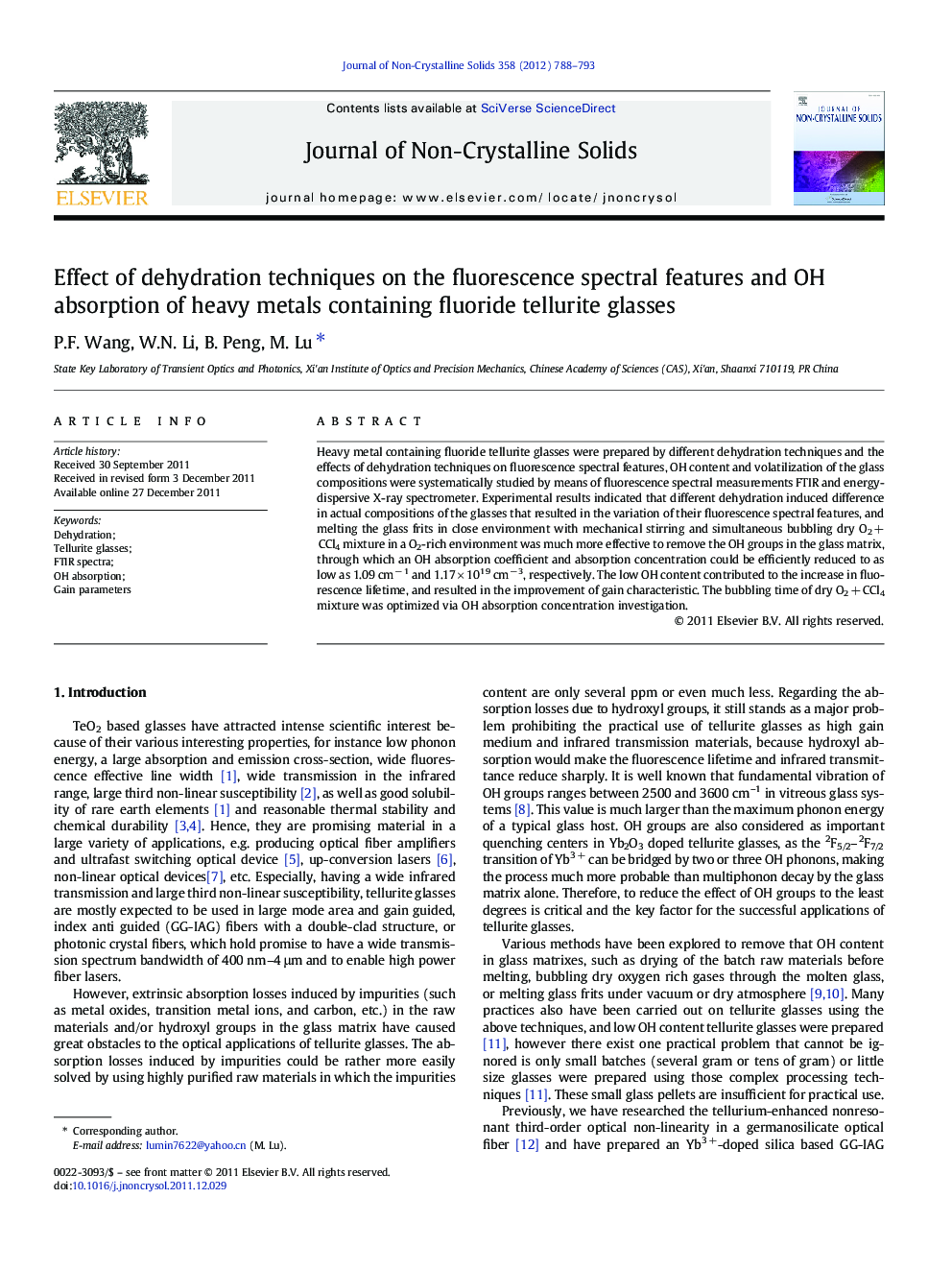| Article ID | Journal | Published Year | Pages | File Type |
|---|---|---|---|---|
| 1482372 | Journal of Non-Crystalline Solids | 2012 | 6 Pages |
Heavy metal containing fluoride tellurite glasses were prepared by different dehydration techniques and the effects of dehydration techniques on fluorescence spectral features, OH content and volatilization of the glass compositions were systematically studied by means of fluorescence spectral measurements FTIR and energy-dispersive X-ray spectrometer. Experimental results indicated that different dehydration induced difference in actual compositions of the glasses that resulted in the variation of their fluorescence spectral features, and melting the glass frits in close environment with mechanical stirring and simultaneous bubbling dry O2 + CCl4 mixture in a O2-rich environment was much more effective to remove the OH groups in the glass matrix, through which an OH absorption coefficient and absorption concentration could be efficiently reduced to as low as 1.09 cm− 1 and 1.17 × 1019 cm− 3, respectively. The low OH content contributed to the increase in fluorescence lifetime, and resulted in the improvement of gain characteristic. The bubbling time of dry O2 + CCl4 mixture was optimized via OH absorption concentration investigation.
► Low OH content. ► High fluorescence lifetime. ► High gain coefficient.
